
CNN reports that Apple is in talks with record labels to increase the quality of music sold through the iTunes Store, boosting the music from a 16-bit format to a 24-bit format.
Professional music producers generally capture studio recordings in a 24-bit, high-fidelity audio format. Before the originals, or "masters" in industry parlance, are pressed onto CDs or distributed to digital sellers like Apple's iTunes, they're downgraded to 16-bit files.
From there, the audio can be compressed further in order to minimize the time the music will take to download or to allow it to be streamed on-the-fly over the internet.
The report suggests that the high-quality files could eventually appear as premium-priced options next to existing formats. Users may also have to invest in new hardware to support the 24-bit files.
Many models of Mac computers can play 24-bit sound, and the iTunes program is capable of handling such files. But most portable electronics, and many computers, don't support 24-bit audio.
To make the jump to higher-quality music attractive for Apple, the Cupertino, California, company would have to retool future versions of iPods and iPhones so they can play higher-quality files.
Apple's iTunes Store initially offered 16-bit tracks at 128 kbps with digital rights management (DRM) technology included. But over time, the company was able to introduce "iTunes Plus" tracks encoded at 256 kbps and lacking any DRM restrictions, eventually shifting the store's entire catalog over to iTunes Plus tracks. A further shift to offering true, uncompressed 24-bit tracks would have the potential to reinvigorate music sales by catering to audiophiles unhappy with the current quality of music downloads.





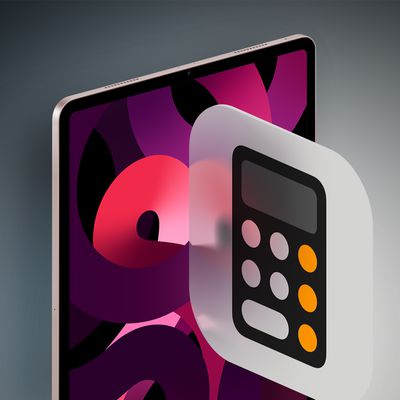
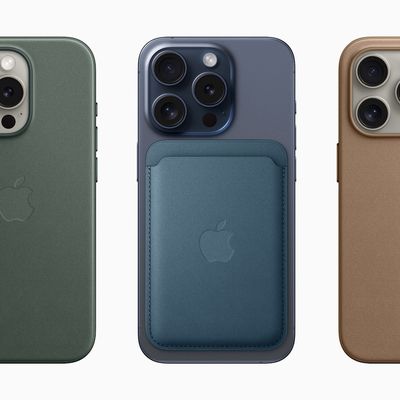
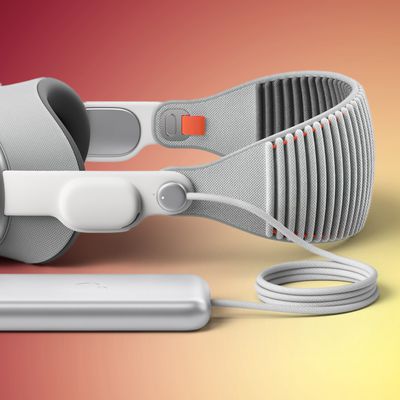
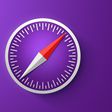










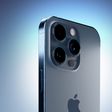
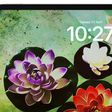
Top Rated Comments
http://www.fullcompass.com/common/files/3382-world_beyond_20khz.pdf
Sorry, I didnt have the intention to make it personal, but what you said was clearly a personal attack. I agree about the distortion comment though. Upsampling DOES introduce distortion on making the music a bit warmer. Recording studios are using upsabling for remastering in daily basis. And it is very common to up-sample in very high rate (such as up to 384khz) and then because some times music becomes a bit too warm they use cold digital gear to compensate.
There is no way to get the original sound of a 96000 file by upsampling, I agree. Oversampling and upsampling are signal processing steps that convert the signal to higher sampling rates for easier filtering. Properly done they are not affecting the original content of the signal. However, they make the process of postfiltering much easier. And also asynchronus upsampling helps reduce jitter (which tends to harden the high frequencies). the difference is definitely audible as a smoother, more natural, less harsh sound (what I described with the word "organic" in my previous post). And it is as closer you can get to the sound you will get from a high rez master.
Now, if you want you can agree, and if not, you are free to disagree. Other than that, I have much more important things to do than trying to gather data to support what I said on any further data cataclysmic responses of yours… "A man who knows how much he knows, knows how little he knows".
If you want to demonstrate us your system and to show off your experience on listening music through expensive equipment, that's my main sound system. Maybe not as tall as your genesis imitations, just the 1m cable that connects the dac to preamplifier though, Kimber Select 1036 costs $2,5k and the speakers $30k... And I CAN hear difference..
Let's see the double blind tests to back that up. "Any time" is so broad it's ridiculous. If you don't have 16 bits of dynamic range to begin with, you can hardly lose anything but noise by dithering down to 16 and MOST music doesn't have anywhere NEAR 96dB of dynamic range in it, particularly in 2011 (probably less than 30dB with most "rock" music today that is so compressed it's just ridiculous).
Being able to "hear" a dynamic range difference also depends on playing it back at levels that recreate that much dynamic range. Otherwise, it tends to get lost in the noise floor. Add to that the fact the listener has to be able to reliably even notice the difference and your statement is just so much nonsense.
The classic overdriven sound of electric guitar does come from 'hard clipping' too! And electric guitars themselves are bandwidth limited! To fixate on cable sounds is to ignore the reality of even great recordings.
It saddens me that you're drawn to listening to test recordings over thousand dollar wires, rather than 'real music'. Music isn't about the very last nuance in tone - it's about emotional impact. Those that push the limits of music aren't the people making 'purist' recordings in studios which have a side business selling audiophile loudspeakers.
Do you think that I am SUCH an idiot to spend a months wage for this cable if I wasn't first 100% sure after repeated and exhausting listening and under the shade of the cable snake oil myth spread everywhere in the anti-audiophile cult that it definitely improves the sound quality? You rationalists are living in a world of numbers, tested by flawed equipment and you don't trust your OWN ears..
I am not even touching the most stupid thing you could ever suggest: the double blind tests. When the difference is 1% on the sound quality and you get a bunch of untrained ears to listen and search for the difference under a controlled environment, do I need to point that the failure rate of these tests lean more on the side of NOT hearing the difference rather than hearing it? Double blind tests are not panacea for sound testing. Read this lengthy article and see why:
http://www.stereophile.com/features/141/index.html
From the above link:
And to indulge your judicious instincts, here is a proof for my previous claim about 20Khz. Have a look on the famous: "Inaudible High-Frequency Sounds Affect Brain Activity: Hypersonic Effect"
http://jn.physiology.org/content/83/6/3548.full.pdf
Here you can satisfy your rationalistic hunger with an exaggerated amount of magnificent scientific proof.
Some times though, scientific methods can not apply in metering emotional enjoyment. For me is not possible to get a value for perfect sound without using my OWN ears as it is not possible to test the difference in quality between Mariage Freres tea and Tetley without using my own tongue. Or by testing the amount of love you feel for someone by studying a magnetoencephalography.
I leave you keep on with your journalistic factual posts and the cold rationalism. They will not change my poetic view of life and the enjoyment I get from my OWN choices even if you don't have the capacity to appreciate them.
Bologna. It doesn't have a darn thing to do with 'organic'. It simply controls the frequency response (and the bits control dynamic range) as per Nyquist theorem. The ignorant crap about more bits or greater frequency response = more like analog has gone on for years and only shows that the people spreading it don't have a clue how digital audio actually works.
To make matters even more absurd, what you're suggesting people try is upsampling and you cannot make something out of nothing! There is no musical material to be gained by upsampling. If anything, you're introducing the possibility of more distortion. The only time upsampling ever helps (namely in video, not audio) is when the scaler in the device doing the upscaling (to work with the native display device's actual output) is better quality than the one in the display device (if it's worse, then you're better off letting the display do it). If the DAC used in an audio device were somehow more linear in its op-amp distortion in the 96kHz range than 44kHz (no reason it would be; if anything it's likely to be the other way around), then there might be some small benefit, but that's not a result of digital audio, but a crappy piece of equipment design.
Early CD audio designs did have a problem with frequency response in that the brick-wall filters they used very early on didn't have time to ramp down smoothly from 22.5kHz to 20kHz and caused frequency abberations. However, this problem was easily solved not long after the first players with oversampling (if you don't know what it is; look it up), enabling near perfect sound reproduction within the confines of the sampling frequency and dynamic range limits (most recordings don't even use that much information). No human can hear beyond 20kHz. Very few recordings contain even 85dB of dynamic range, let alone 96 or more. Analog turntables were doing well to get in the high 70s (and their usable frequency response falls to MUSH around 15kHz, well below CD standards). Most bad sounding early CDs had more to do with poor mastering (often using vinyl masters to short-cut the process instead of master tapes). Rock albums are rarely mixed for sound quality to begin with (louder = better to radio stations).
If there's a difference in your MBP when outputting a different format, there's something wrong with your hardware. The op-amp in the MBP powering your headphones is probably cheap crap and isn't offering up enough power to drive them cleanly. One can't discount the power of suggestion either. If you believe it will sound better, it probably will to you. It doesn't indicate a real difference, however. These sorts of things tend to disappear when double blind testing is used.
I do my own recording (analog acoustic guitar and vocals along with electric guitar and synthesizers as well) with Logic Pro and a FW audio interface driving $2k a pair ribbon speakers (same ones used in $50k Genesis II speakers) with a custom active crossover and over 500 watts per channel combined between the two amplifiers. There is NO audible difference between outputting 24/96 and 16/44 using that system (and unlike your example, which doesn't . Lossy compression is another matter, but it has nothing to do with 24/96 versus 16/44.
Seriously, the only thing you're doing by posting technical nonsense is further spreading ignorance about digital audio.
1) Open the Audio Midi Setup app in your applications/utilities folder
2) Click on the built in output tab from the list on the left
3) On the right go to output tab and change the values of Format: to 96.000 and 2ch 24bit.
4) Open itunes and play a song.
Even if you listen this song from the speakers of your macbook, you will instantly identify a subtle difference. Try to listen to rock music with vocals (Scorpions, U2, Metallica e.t.c.). The sound will be less "digital", less fake, have a less flat and "grainy" feeling. It will be more organic. The songs will instantly get a sweeter presentation and any harsh cymbals and voice sibilance will get rounded. If you have a more expensive equipment then the difference will be much more prominent. I personally cannot listen to music at regular settings anymore with my Sennheiser 650 directly connected to my macbook.
To be able to easier identify the difference, try to change the settings while the song is playing from higher to lower resolution and vice versa. As at this level the changes on music character are more psychologically perceived. It has been found through studies that people find it easier to identify a difference when they go from listening a high resolution file back to a normal resolution one, so to better spot the difference try to leave the song play for a minute or two with the higher rez settings before you change it back to the normal ones.
Now, don't forget that you are just doing an up sampling on a regular file to half the maximum resolution (96.000 as opposed to 192.000) your macbook's DAC can handle. And still the difference is audible from the tiny speakers of your macbook. Think about listening an original studio master through a good pair of headphones!! I cant wait for the hi-rez era of mainstream music!!! :apple: